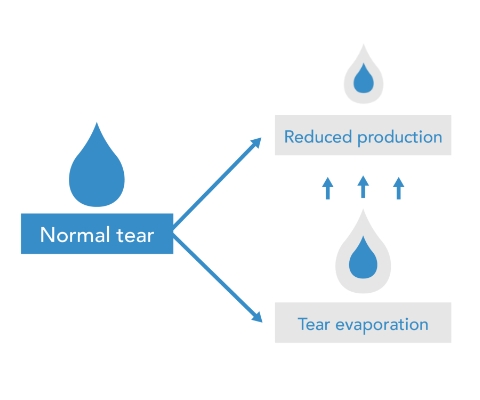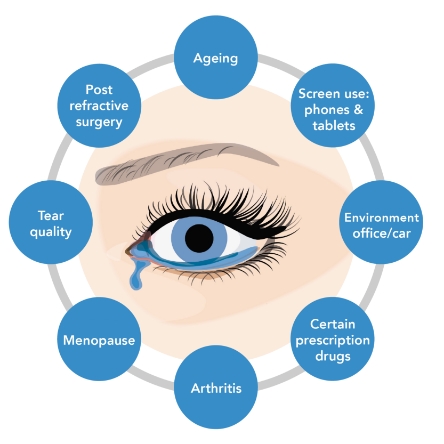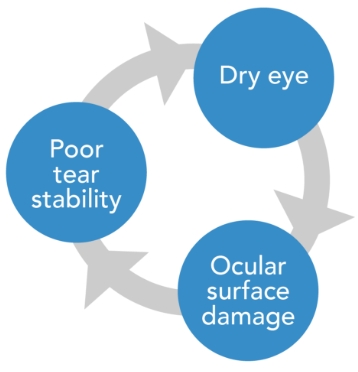DRY EYE
Dry eye is a growing market, increasing by 6.5% year on year.*
This is a significant opportunity for pharmacy, especially as NHS England has advised CCGs not to routinely prescribe for dry eye as the condition is appropriate for self-care.
*Nielsen data December 2018
Dry eye has 2 potential causes:
Insufficient tear production (e.g. Sjögren's syndrome or due to blocked tear ducts or the side effects of certain medications)
Increased tear evaporation (Possible causes include: meibomian gland deficiency, preservatives in eye products, contact lenses, allergies, low blink rate)
RISK FACTORS
The diagram shows the potential risk factors for dry eye:
A VICIOUS CYCLE
The cycle shows how dry eye can then lead to damage of the ocular surface, which affects tear stability, causing dry eye:



